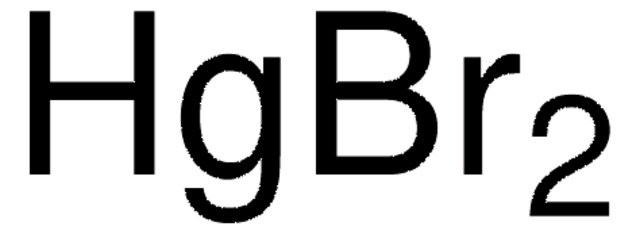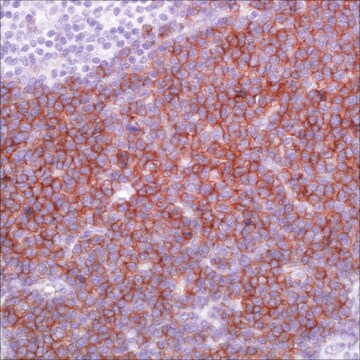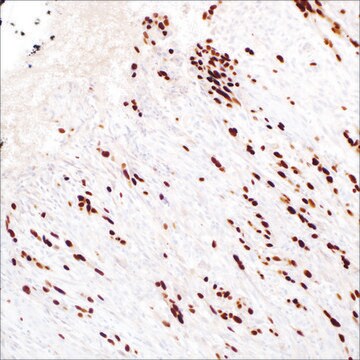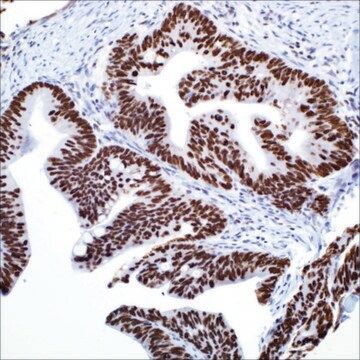200085
Mercury(II) bromide
ACS reagent
Sinónimos:
Mercuric bromide
About This Item
Productos recomendados
grado
ACS reagent
Nivel de calidad
presión de vapor
1 mmHg ( 136.5 °C)
formulario
powder
idoneidad de la reacción
reagent type: catalyst
core: mercury
impurezas
≤0.05% insol. CH3OH
residuo de reducción
≤0.02%
color
white to very faintly yellow
bp
322 °C (lit.)
mp
236 °C (lit.)
trazas de anión
chloride (Cl-): ≤0.25%
cadena SMILES
Br[Hg]Br
InChI
1S/2BrH.Hg/h2*1H;/q;;+2/p-2
Clave InChI
NGYIMTKLQULBOO-UHFFFAOYSA-L
¿Está buscando productos similares? Visita Guía de comparación de productos
Descripción general
Aplicación
Palabra de señalización
Danger
Frases de peligro
Consejos de prudencia
Clasificaciones de peligro
Acute Tox. 1 Dermal - Acute Tox. 1 Inhalation - Acute Tox. 2 Oral - Aquatic Acute 1 - Aquatic Chronic 1 - STOT RE 2
Código de clase de almacenamiento
6.1A - Combustible acute toxic Cat. 1 and 2 / very toxic hazardous materials
Clase de riesgo para el agua (WGK)
WGK 3
Punto de inflamabilidad (°F)
Not applicable
Punto de inflamabilidad (°C)
Not applicable
Certificados de análisis (COA)
Busque Certificados de análisis (COA) introduciendo el número de lote del producto. Los números de lote se encuentran en la etiqueta del producto después de las palabras «Lot» o «Batch»
¿Ya tiene este producto?
Encuentre la documentación para los productos que ha comprado recientemente en la Biblioteca de documentos.
Los clientes también vieron
Nuestro equipo de científicos tiene experiencia en todas las áreas de investigación: Ciencias de la vida, Ciencia de los materiales, Síntesis química, Cromatografía, Analítica y muchas otras.
Póngase en contacto con el Servicio técnico













